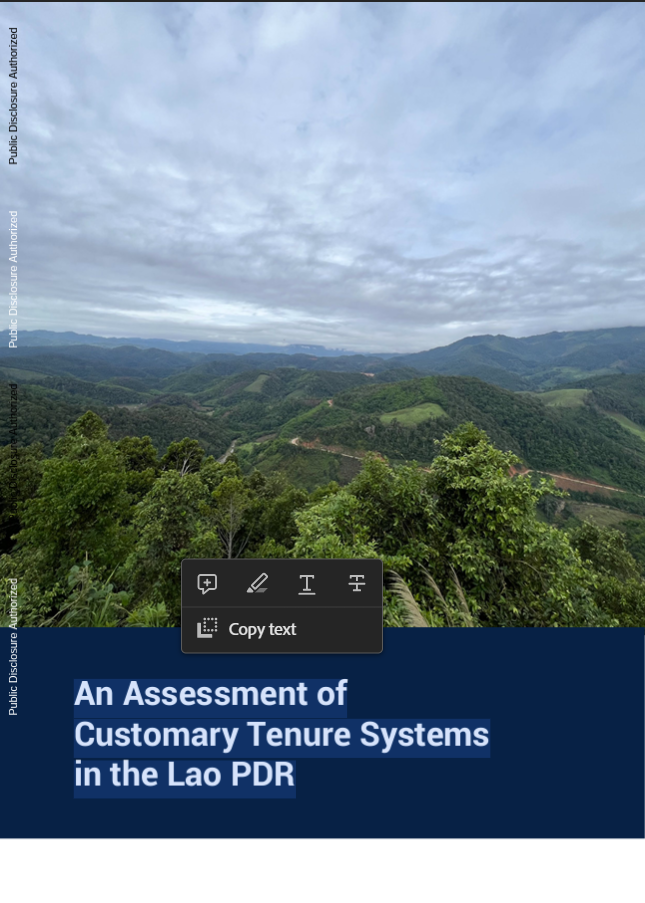Resource information
The history of land rights in the Lao People’s Democratic Republic (Lao PDR), hereafter referred to as Laos, is a history of customary land tenure systems which remain the most prevalent form of land tenure. As social systems, land tenure systems in Laos have been affected by and have adapted to external forces such as neighboring kingdoms, colonialization, geopolitics and war, migration, and global economic trends. Ongoing rapid changes in national socioeconomic conditions and domestic political goals continue to alter the customary tenure landscape. Customary tenure systems have responded differently to changes, but the predominant direction is a transition towards formalization (titling, land use planning, land taxes, family land books etc.) that provide varying levels of recognition and protection of land rights. As this transition occurs, a mixed customary-statutory tenure mosaic has emerged across the mountains and plains of Laos. Within this mosaic, the level of tenure security differs. Due to a lack of formal recognition, the most insecure tenure is land held fully under customary tenure. This desk-based assessment considers the culture and ethnicity of customary tenure systems, their prevalence in the country, general typologies found in Laos, customary tenure systems in transition, and past efforts to formalize customary land rights. Before the year 2000, protection of customary tenure systems was not an urgent issue. However, the present development trajectory includes: large numbers of commercial investments in land, increased smallholder commercial agriculture, extensive infrastructure development, and greater overall commodification of land. These forces have increased the insecurity of customary land and will likely continue if actions are not taken to better protect it. Customary land rights in Laos are part of a complex cultural landscape with high ethno-linguistic diversity that results in multiple local tenure specific contexts. This includes customary land rights held collectively, individually, by households, by village founders, or by clans. Land and resource rights in local tenure contexts are complex and can have varying degrees of ‘privateness’ found embedded in collective rights. Many nuances exist around customary rights that are resource specific and linked to time and seasonal changes. Power dynamics within local customary systems and between rights holders and external groups, influence these systems. In some customary tenure systems, kinship and inheritance patterns marginalize or exclude women from holding land rights. To fully understand a local tenure context takes effort and time spent learning from the rights holders; without this, inaccurate conclusions may be reached and inappropriate or ill-conceived attempts to formalize customary tenure systems could be made. Importantly, formalization cannot rely on a single approach to address tenure diversity. Strict social safeguard frameworks are essential to ensure that marginalized groups do not directly or indirectly lose their land rights, if there is a transition from customary to formal tenure. In some contexts, no formalization may be the better option. Good examples of formalization are available in Laos and are ready to be scaled up. The main obstacles for doing so are a restrictive and unclear land governance legislative framework, insufficient funds, and a strong focus on economic planning and growth for which customary tenure has not been considered. This report includes recommendations for strengthening and prot


